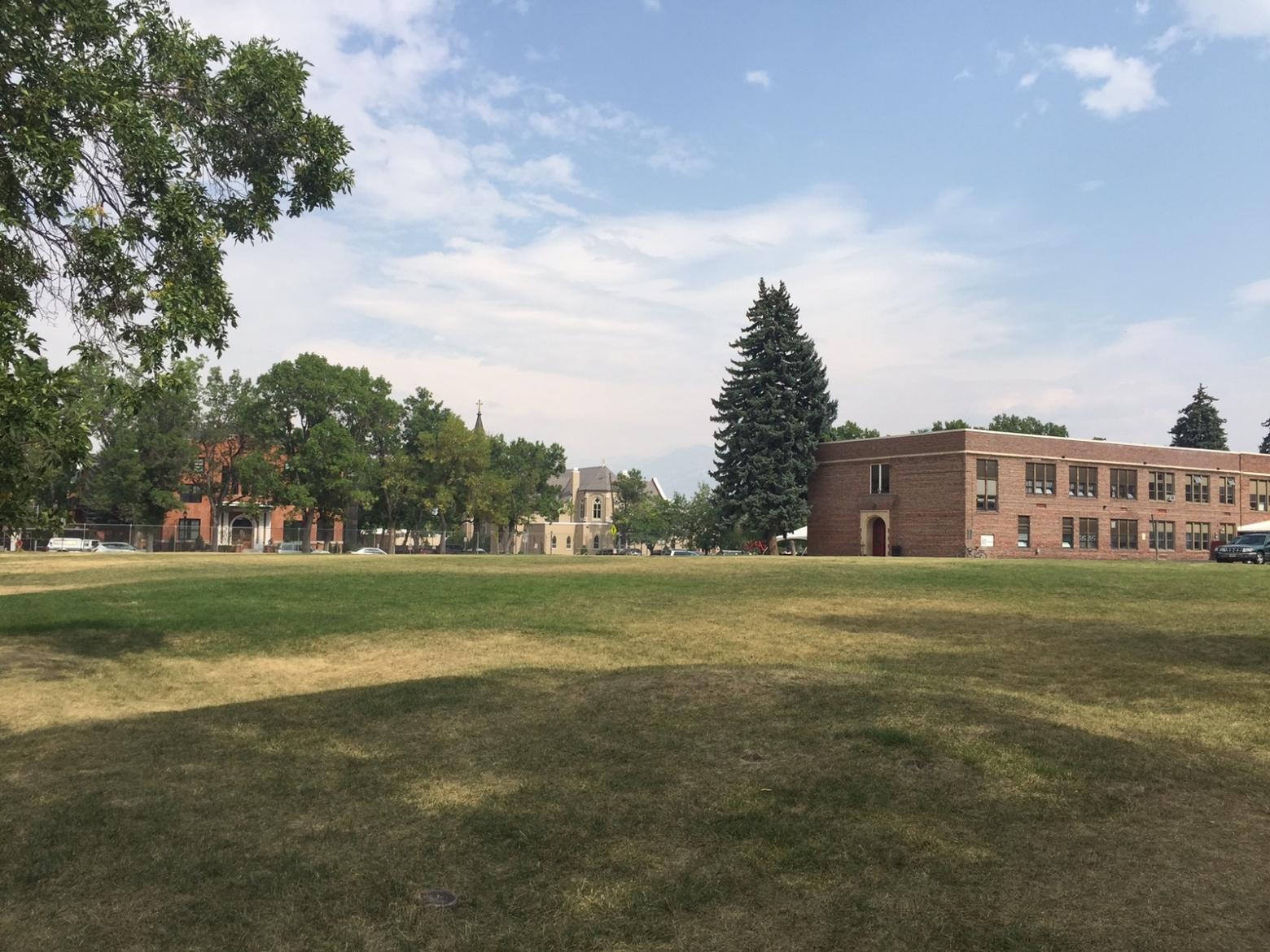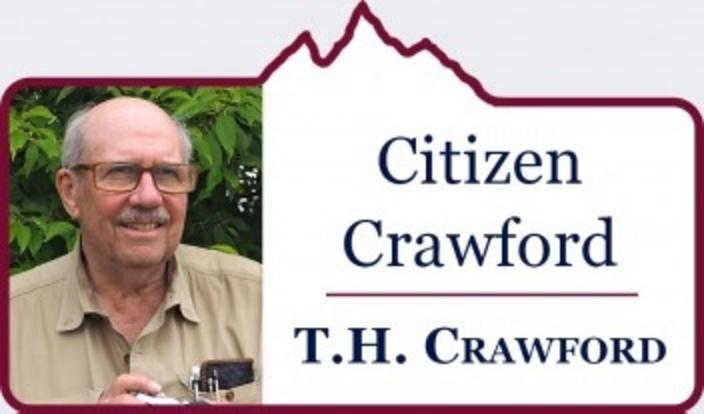Back to StoriesSelling Off The Historic Playground To Pay For Growth
September 14, 2017
Selling Off The Historic Playground To Pay For GrowthAre Bozeman Public School Officials Delivering A Lesson In Knowing The Price For Everything But The Value of Nothing?
I suppose
because it brings to mind the old cliché: a cynic is one who knows the price of
everything and the value of nothing. We’re
putting a price-tag on lots of public assets, it seems, intent upon liquidating
them to the highest bidders.
This
oversimplification can certainly be applied to the ongoing conflict about
proposals to sell or privatize federal public lands in the West. To paraphrase
my old friend Ray Rasker of Headwaters Economics: “We quantify many things
about the economics of the West and the Greater Yellowstone area, but we can’t
really assess the value of why we live here.”
Consider the
current resounding public outcry over Secretary of the Interior Ryan Zinke’s
arbitrary judgements about the size and even the existence of some
presidentially-created national monuments. His motivation, on one hand, is
intended to trumpet the financial value of lands inside monuments only in terms
of their potential value for resource extraction. But this rationale, of emphasizing monetary value based on their quick-return exploitation over the public’s
long-term pleasurable use of those lands defies reason.
In Bozeman, this
same kind of thinking is now hitting very close to home with talk of divesting
another kind of valuable piece of public land. Ironically, the entities pushing
this bad idea are those people who are in charge of Bozeman’s public schools. What
lessons are they imparting to the youth who will be our leaders of tomorrow? Will this be featured in future courses on
civics?
If Secretary Zinke’s meddling with national
monuments is viewed as a macrocosm, while no hurricane in a kettle, the growing
controversy over proposals to sell the lawn of the Emerson Cultural
Center—which functions now as a public park and valuable green space—certainly
reflects a microcosm at the neighborhood level.
The .8 acre of
lawn at the Emerson has been used for the last quarter century as an important
adjunct for outdoor public recreation, “Lunch on the Lawn”, and other events, coincidental
with the cultural activities within. A
kind of crazy notion which surfaced recently is that twenty-five years of
uncontested or interrupted use should qualify now as “adverse possession”.
Adverse possession, as in the public
cultivating a strong affinity for the lawn—which actually does belong to the
public. Still, public school officials are
not only ignoring this important fact but they appear poised to brazenly put it
on the auction block to impetuously fix a budget shortfall.
While probably
not properly legal, the move by public school officials to sell off the Emerson
lawn because they are cash-strapped in this era of runaway growth and
need for new schools, does bring up the question of just what the hell is the
provision of “acquired adverse public possession” really about?
To return to my
first point, how can a true public value be arrived at and how can that be
measured against the appraised monetary value of, say, a beloved community lawn?
If it didn’t exist already, having the Emerson lawn is an asset that any
community worth its salt would want to have.
Prior
to the Emerson morphing into a cultural center, the grounds were home to a
public grade school. In the petition submitted to the U.S. Department of
Interior in 1990, seeking to have the Emerson school site added to the National
Register of Historic Places, local historians wrote, “Located
on a block that has served as the center of public educational activities since
the construction of the community's first brick school in 1877, the Emerson
School is the third in a succession of school buildings designed to serve the needs
of elementary age students at that location.”
The lawn at the Emerson need not pass from public ownership. This isn't what "successful" towns do. It's an act of desperation.
The Emerson
lawn, crucial to the overall character of the cultural center, is a major contributing
asset to the surrounding neighborhoods and a place for green space relief in a
downtown becoming ever more carpeted in concrete and mortar. The irony being
that as development happens such green space parks will become ever more treasured by
the public.
If the Emerson
property is sold to (presumably) a developer it means passing from public
ownership to private interests through the instrument of monetization. Thus a piece of land long held in public
ownership and beneficial to the Emerson for a quarter century passes into the
realm of private interests furthering the indiscriminate development of
Bozeman. Does this make sense?
Another irony being that such development will
itself add to the probable future needs for more schools and
infrastructure to which the sale of the lawn is, in reality, merely hasty liquidation of a public asset that will not resolve the larger problem. This occurrence comes at the loss of public
open space in Bozeman and its inestimable recreational value to citizens now
and in the future.
Will the taxes
generated by development truly compensate for the additional social and
infrastructural costs, or will they be spread among the greater taxpaying base,
just as the costs of growth currently are being subsidized by the public? The problem goes, as you can see, way beyond
the unquantifiable lost public values and far more easily measured gain for private
developers.
This is yet
another unfortunate symbol of the present Bozeman quandary, being willing to
sell off things we profoundly value in the present in order to, allegedly,
achieve a better future. What do we want
the city to become? Yes, it is our city.
Should developers be encouraged to come into this city and reap what they
perceive as low-hanging fruit with the complicity of city and school officials
elected and otherwise, following the shibboleth that growth is necessary or
stagnation will occur?
Unchecked growth
is the paradigm of the cancer cell as Edward Abbey so aptly pointed out decades
ago. In terms of intangible public
value, conjure, if you can, the joyful sounds of thousands of childrens’ voices
across generations as they frolicked and shouted with exuberance on the Emerson
lawn for well over a century. Add to this the intermingling of adult
expressions of happiness conjoining, with baritone and bass orchestral
accompaniment lending weight to my previous allusion to the curiously phrased
“adverse possession”.
Can this monetarization, i.e. the value realized in a simple real estate deal, begin to
compare, particularly in honestly assessing what is being lost?
Part of the blame rests squarely on our elected officials in Helena who have not only shortchanged funding for public schools but they refuse to let local democracy work by allowing citizens to even consider passing a tax aimed primarily at the millions of visitors passing through Bozeman each year. A small lodging tax would generate millions that could be used to help mitigate the costs of growth.
Another part of the blame resides with city and county officials who have yet to devise a coherent strategy for dealing with the rising costs of growth, forcing our public schools and taxpayers to bear the brunt.
As Bozeman
continues to grow with or without responsive planning, open space—most
especially green ones—will remain buffers against emotional and psychic trauma
increasing at a geometric rate even surpassing the dollar values of our real
estate. If you question this, check with
your realtor on prices of homes adjacent to, say, Cooper Park, or ask Mountain
Journal’s column-writing psychotherapist Timothy Tate.
The lawn at the
Emerson need not pass from public ownership. This isn't what "successful" towns do. It's an act of desperation. An easy solution would be for the
school district to do what’s right and hand it over to the city to be an
official park. A conditional use
agreement between the city/school district and the Emerson folk could easily be
accomplished and benefit Bozemanites young and old forever.
If not, here’s an assignment for leaders of
the Bozeman public school system and its duly elected school board: perhaps you might explain what life-long lessons you are teaching our young impressionable minds
about the true meaning and values of sustainable community?
EDITOR'S NOTE: Tim Crawford has been a longtime patron of the historic Emerson Cultural Center and along with other citizens helped save it a quarter century ago from proposed demolition.




